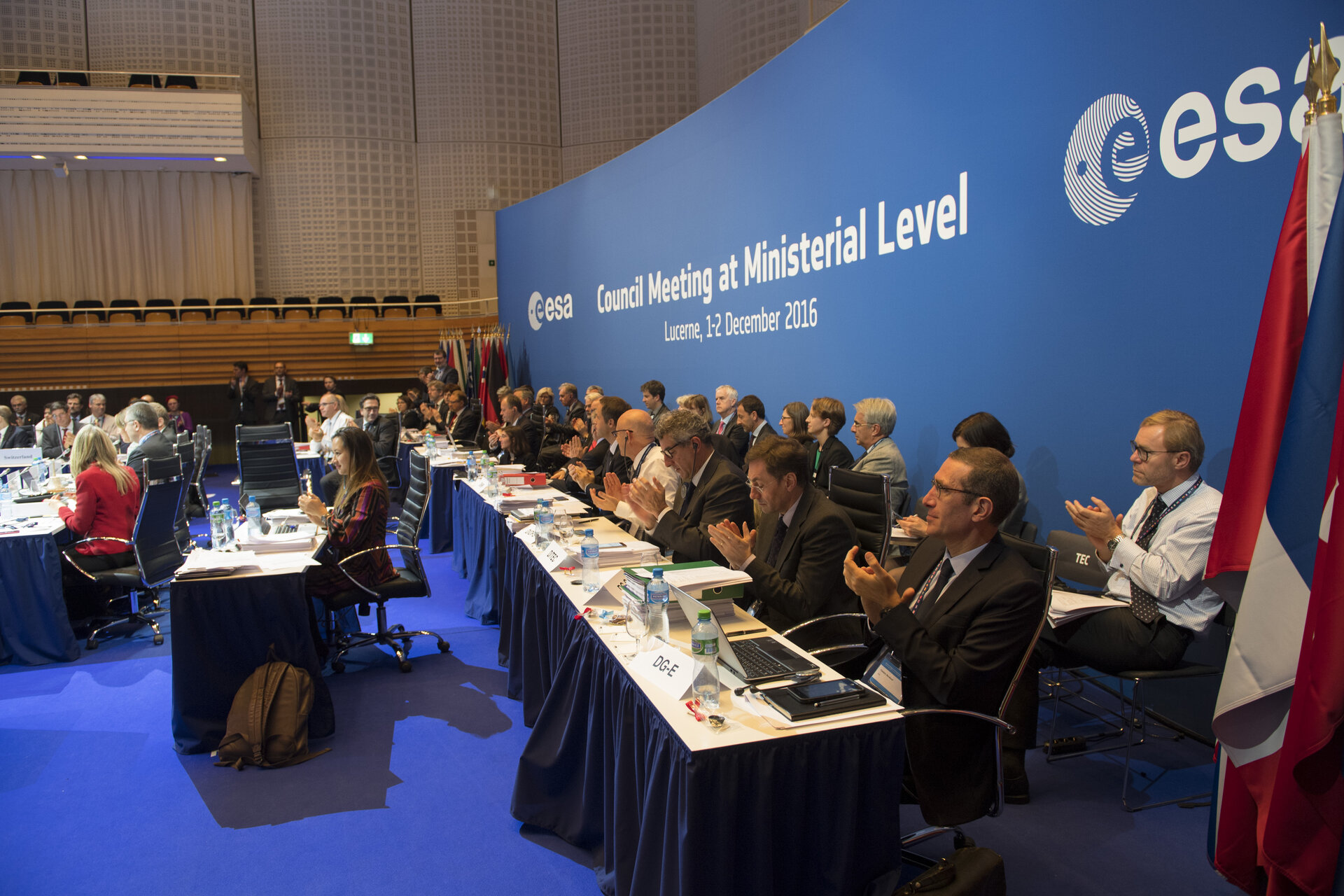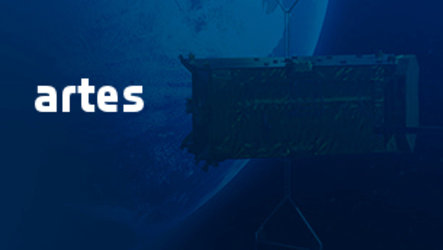Way forward for ESA Telecom following Ministerial Council meeting
ESA’s Advanced Research in Telecommunications Systems (ARTES) programme adds new elements and strengthens existing ones, with an overall subscription of €1.2 billion following the Council meeting at Ministerial Level in Lucerne, Switzerland.
This confirms the value placed by Member States on stimulating innovation, as the key to keeping European and Canadian industry at the leading edge of the highly competitive global market for satellite communications and integrated applications.
ESA Member States have recognised the value created by two of the most popular ARTES programmes, Core Competitiveness and Integrated Applications. Both programmes have recently been streamlined to make them even more effective.
Core Competitiveness helps European and Canadian space industry stay at the cutting edge of innovation within the highly competitive global satcom sector. Integrated Applications helps to integrate space data and technology into solutions for a wide range of markets, with a focus on commercial services and economic impact.
Laser communications in space will be promoted by ScyLight, a programme fostering optical satcom technologies and Quantum Cryptography; and by GlobeNet which is an initiative that builds upon the existing European Data Relay System.
This use of optical communication technologies enables secure and resilient high data rate transmission for time-critical applications such as is required by Copernicus for ice monitoring on waterways and disaster relief.
In the aeronautical sector, the Iris Programme will now decisively move into the next phase of implementation of the satellite-based communication system that will form part of the future European Air Traffic Management System, itself part of the Single European Sky initiative of the European Commission.
Inmarsat, which leads the industry consortium for Iris, is also partnering with ESA to develop the service platform for its next-generation global mobile satcom system, known as ICE or Inmarsat Communication Evolution.
ESA’s GovSatCom precursor programme will initially launch five PACIS partnership projects proposed by industry.
In cooperation with the European Commission and the European Defence Agency, the programme supports a European solution for the next generation of secure and resilient governmental satcom (GovSatCom). It supports applications such as civil protection and maritime surveillance. GovSatCom forms part of the Space Strategy for Europe and it is part of the ESA/EU Joint Statement on Shared Vision and Goals for The Future of Europe in Space.
There is complementary funding to the Electra, Neosat and SAT-AIS programmes.
Electra, implemented in partnership with SES, will proceed with the development and in-orbit qualification of an all-electric geostationary Satcom platform in the 3 tonnes launch mass range. Neosat will extend its capabilities of the next-generation European platforms in the 3–6 tonnes launch mass range. SAT-AIS will focus on a step-wise evolution of the next generation of micro-satellites.
AIDAN is a new partnership formed with satellite operator ViaSat, to address ground segment solutions for very high throughput satellite systems.
In-orbit demonstration of innovative satcom technologies, systems and services will be facilitated by the new ARTES Pioneer element.
Finally, ARTES Future Preparations will continue to help industry define market opportunities, regulatory barriers, standards, frequency spectrum needs and economic and business issues that relate to satcom concepts and technologies.





